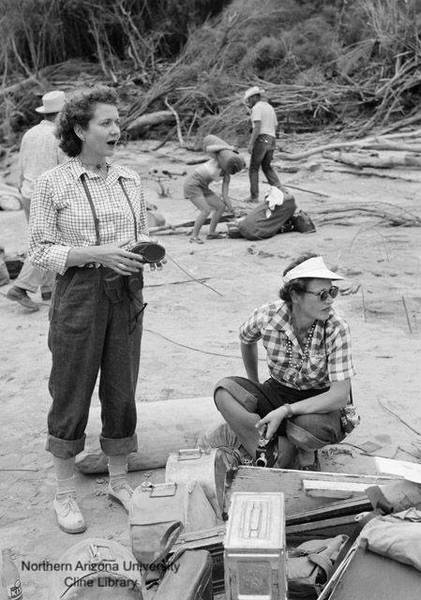Dublin Core
Title
Description
Between 1936 and 1949, Norm Nevills operated a river running company out of Mexican Hat, Utah. Norm and his wife, Doris, guided river trips down the San Juan and Colorado rivers, helping people from across the country experience the rivers of southern Utah. Today, river rafting is big business, but in the 1930s and 40s only a few companies ran commercial trips, and even fewer allowed women to join them.
Societal attitudes of mid-20th century America constrained the early years of river recreation. Wild rapids and rough camping were considered masculine adventures too strenuous for women. But Nevills believed that anyone could become a river rat as long as they did their part to enjoy all the river had to offer. He was one of the first guides to invite women on his trips. And they came -- for adventure and inspiration. Some who came were professional scientists seeking to make discoveries outside of their academic campuses.
Yet, even as women were “down in these canyons, so far from the rest of the world... [away from] the fuss and rush of regular living,” they maintained their idea of what it meant to be a “woman.” Some brought dressing gowns and curled their hair with pins and product. For his part, Nevills expected women passengers to cook and clean at camp. While planning a 1940 expedition, Nevills asked Mildred Baker, a botanist for a New York Natural History Museum, to cook to secure her place on the trip. He wrote, “for all the men’s sakes, it’s so much nicer to have the women in the kitchen giving the home cooked meal atmosphere!” Baker agreed, and became one of the first women to successfully travel the full length of the Colorado River. Maybe it was a small price when other companies refused women altogether.
The early rafting industry upheld gender norms even as it bent them. Despite his sexist attitudes about what women brought to the river, Nevills always asserted they belonged and the experience of heading downstream would change them. He wasn't wrong. The women on Nevills expeditions sought the same sorts of experiences that will feel familiar to river rats today -- a sense of freedom, empowerment, and joy.
Creator
Source
_______________
See Emily A. Johson, Steady as She Goes: The Gendered Frontier of Nevills Expedition, 1936-1949, Master's thesis, Department of History, University of Utah, 2015.

